Amino acids are the building blocks of proteins, playing a crucial role in almost every biological process. Found in all living organisms, these molecules are essential for constructing and maintaining the proteins needed for life.

There are 20 different amino acids, each with specific roles and unique properties that contribute to the diverse functions of proteins in the body.
Understanding the types and functions of amino acids can provide insight into how our bodies operate and maintain health.
Some amino acids are classified as essential, meaning they cannot be synthesized by the body and must be obtained through diet. Non-essential amino acids, on the other hand, can be synthesized by the body.
For example, essential amino acids like leucine and lysine are critical for protein synthesis and muscle repair, while non-essential amino acids such as proline contribute to the stability of protein structures.
The arrangement of these amino acids and their R-groups determines the shape and function of proteins, affecting everything from enzyme activity to cell signaling.
Key Takeaways
- Amino acids are essential building blocks of proteins in all living organisms.
- There are 20 different amino acids, each with unique properties and functions.
- Essential amino acids must be obtained through diet, while non-essential ones are synthesized by the body.
Basic Structure of Amino Acids
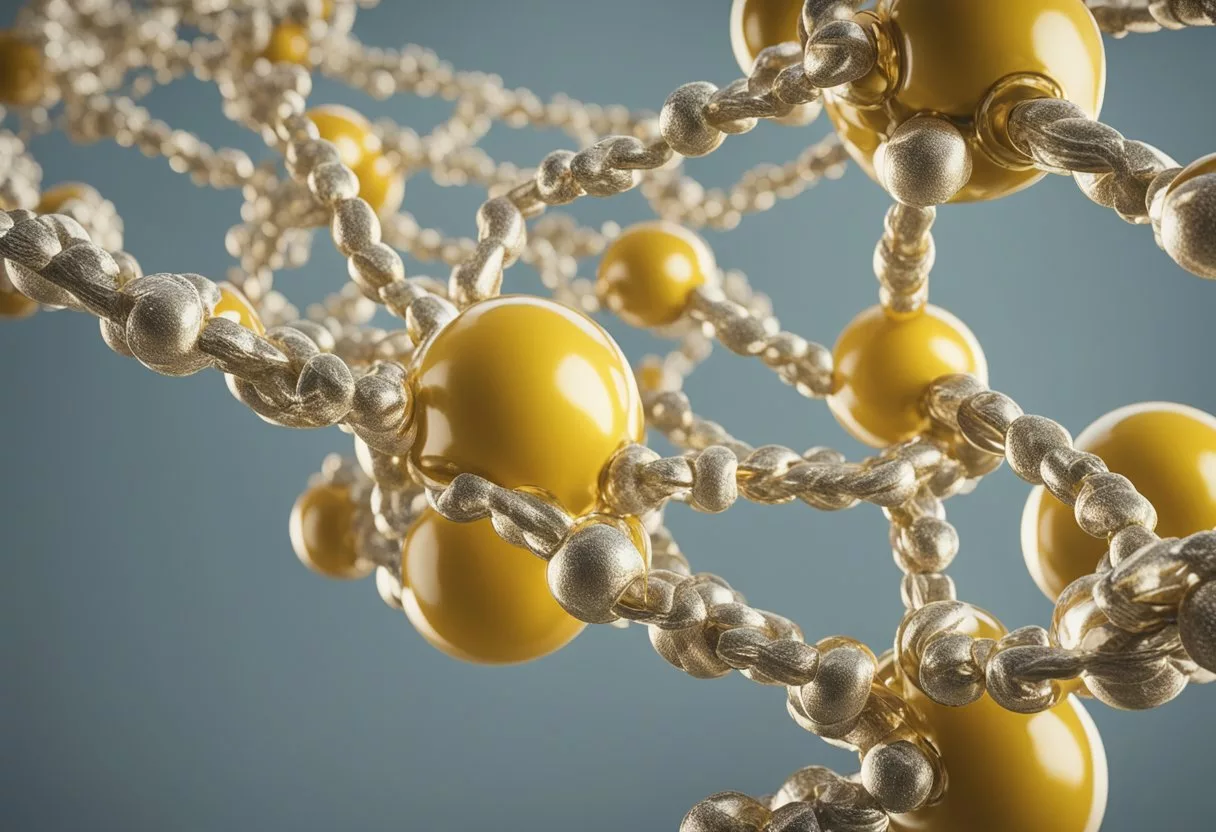
Amino acids have a central carbon atom to which an amino group, a carboxyl group, a hydrogen atom, and a unique side chain (R group) are attached. This common structure allows them to link together forming proteins.
Central Carbon Atom
Every amino acid contains a central carbon atom, often referred to as the α carbon. This central carbon is pivotal because it serves as the attachment point for four different groups.
These groups include a hydrogen atom, an amino group, a carboxyl group, and a side chain (R group). The unique combination of these groups attached to the α carbon gives each amino acid its properties, playing a crucial role in protein structure and function.
Amino Group
The amino group in an amino acid consists of one nitrogen and two hydrogen atoms (―NH2). This group is basic and can accept a proton, making it positively charged at physiological pH.
The amino group is essential in forming peptide bonds, which link amino acids together. During protein synthesis, the amino group of one amino acid reacts with the carboxyl group of another, forming a peptide bond that releases a molecule of water in the process.
Carboxyl Group
The carboxyl group (―COOH) in an amino acid consists of one carbon, two oxygen atoms, and one hydrogen atom. This group is acidic and can release a proton, making it negatively charged at physiological pH.
The carboxyl group is important for the peptide bond formation process. When the amino group of another amino acid reacts with it, a strong covalent bond is formed, crucial for building protein structures.
Side Chains (R Group)
The side chain, or R group, attached to the α carbon is what distinguishes each amino acid. The R group can vary greatly in size, shape, charge, and reactivity.
These variations determine how an amino acid interacts with others, affecting the protein’s overall structure and function. For example, some R groups are hydrophobic while others are hydrophilic, influencing how the amino acids arrange themselves within a protein to maintain functionality.
Each R group plays a pivotal role in the amino acid’s characteristics and how it contributes to the three-dimensional structure of proteins.
Classification of Amino Acids

Amino acids are grouped based on the characteristics of their side chains (R groups). These groups determine how each amino acid interacts with its environment and other molecules.
Non-Polar Amino Acids
Non-polar amino acids have hydrophobic R groups. These side chains do not mix well with water and typically are found in the interior of proteins, where they help maintain stability.
Examples:
- Alanine
- Valine
- Leucine
- Isoleucine
- Methionine
Valine, leucine, and isoleucine have branched chains, making them important in protein structure. Methionine contains sulfur and is essential in starting protein synthesis.
Polar Amino Acids
Polar amino acids have side chains that can form hydrogen bonds with water, making them hydrophilic. These amino acids are often involved in forming hydrogen bonds with other components of the cell.
Examples:
- Serine
- Threonine
- Asparagine
- Glutamine
Serine and threonine contain hydroxyl groups, making them reactive in phosphorylation processes. Asparagine and glutamine contain amide groups, which can be involved in forming hydrogen bonds.
Aromatic Amino Acids
Aromatic amino acids have large ring structures in their side chains, contributing to the bulkiness and hydrophobic nature.
Examples:
- Phenylalanine
- Tyrosine
- Tryptophan
Phenylalanine is non-polar, while tyrosine and tryptophan are slightly polar due to their functional groups. Tyrosine can be phosphorylated, making it important in signaling pathways.
Basic Amino Acids
Basic amino acids have side chains with positive charges at physiological pH. This charge allows them to form ionic bonds and interact with negatively charged molecules.
Examples:
- Lysine
- Arginine
- Histidine
Lysine and arginine have long side chains that end in amino groups, providing positive charges. Histidine has an imidazole ring, which can switch between charged and uncharged forms, making it crucial in enzyme active sites.
Acidic Amino Acids
Acidic amino acids have side chains that are negatively charged at physiological pH. This charge helps them interact with positively charged molecules.
Roles of Amino Acids in Proteins
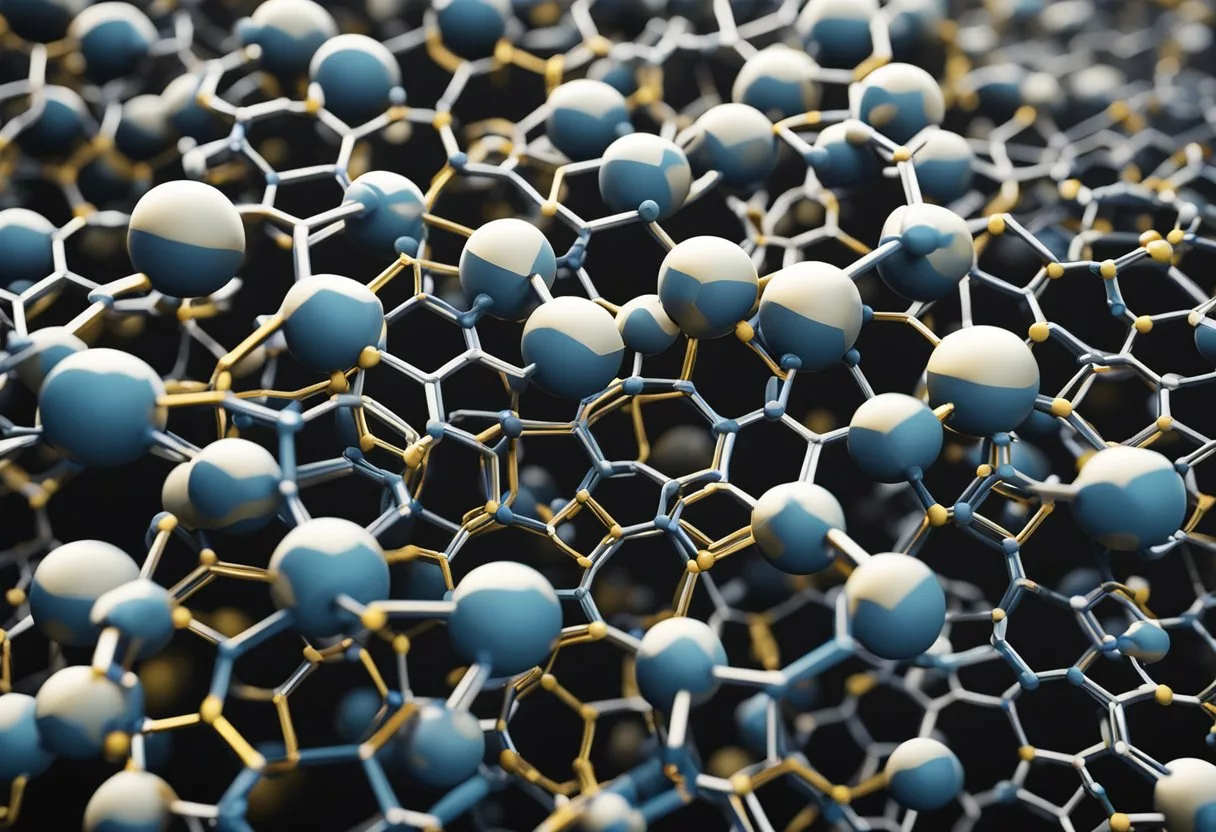
Amino acids play crucial roles in the formation of peptide bonds, the folding of proteins, and enzyme catalysis. These processes are essential for the structure and function of proteins in various biological systems.
Formation of Peptide Bonds
Amino acids link together through peptide bonds, creating long chains called polypeptides. A peptide bond forms between the carboxyl group of one amino acid and the amino group of another. This bond results in the release of a water molecule.
This process repeats, creating a chain of amino acids that will become a protein. These bonds are strong and provide the backbone for protein structures.
Polypeptides can be varied, with different sequences of amino acids leading to different protein functions. The sequence of amino acids determines the protein’s unique structure and function, making peptide bonds fundamental in protein biochemistry.
Protein Folding
The sequence of amino acids in a polypeptide chain determines how the protein will fold into its unique three-dimensional conformation.
Protein folding is crucial because it dictates the protein’s function. Incorrect folding can lead to non-functional proteins and diseases.
During folding, interactions such as hydrogen bonds, ionic bonds, and hydrophobic interactions help stabilize the protein’s structure. Chaperone proteins often assist in this process, ensuring that proteins fold correctly.
Proper folding is necessary for proteins to perform their specific roles in the cell.
Enzyme Catalysis
Many proteins function as enzymes, which are catalysts that accelerate biochemical reactions.
Amino acids in the active site of the enzyme interact with substrate molecules to lower the activation energy of the reaction.
These reactions are vital for metabolism and other cellular processes. Specific amino acids in the active site can bind to substrates, facilitate chemical reactions, and release the products.
The efficiency of enzyme catalysis depends on the precise arrangement of these amino acids, which are crucial for the enzyme’s activity.
Functions of Specific Amino Acids

Cysteine, proline, glutamine, and histidine play crucial roles in various biological functions, including disulfide bridges, protein structure, nitrogen transport, and enzyme active sites. Their contributions to biochemistry are not only vital but also diverse.
Cysteine in Disulfide Bridges
Cysteine is important because it forms disulfide bridges. These bridges occur when two cysteine molecules bond through their sulfhydryl (–SH) groups.
This bond stabilizes the three-dimensional structure of proteins, making them more rigid.
Disulfide bridges are especially common in extracellular proteins and enzymes, where they help maintain functional shape under different environmental conditions. For instance, insulin’s stability and functionality are greatly influenced by these bridges.
Proline and Protein Structure
Proline affects protein structure by introducing conformational rigidity.
Unlike other amino acids, proline has a unique cyclic structure, connecting the R-group back to its amino group. This rigid ring limits how much the protein can bend, often leading to a kink or turn.
Proline is known to disrupt α-helices and β-strands, impacting the protein’s secondary structure. This makes proline vital in collagen, where it helps form the triple helix structure.
Glutamine and Nitrogen Transport
Glutamine is essential for nitrogen transport within the body. It carries nitrogen between tissues, aiding in ammonia detoxification by converting excess ammonia into urea. This process is critical for maintaining the body’s nitrogen balance.
Glutamine also serves as a fuel source for immune cells and enterocytes, the cells lining the intestines. This enhances their function and promotes overall cellular health.
Histidine in Enzyme Active Sites
Histidine plays a key role in enzyme active sites. Its imidazole side chain can act as both an acid and a base, making it highly versatile. This property is critical in catalytic mechanisms, such as those of proteases and phosphatases.
Histidine often participates in proton transfer reactions, facilitating crucial biochemical processes. Its presence is instrumental in hemoglobin, where it helps stabilize oxygen binding and release.
For more details about amino acid functions, amino acids are detailed in Biochemistry LibreTexts and Khan Academy.
Essential and Non-Essential Amino Acids
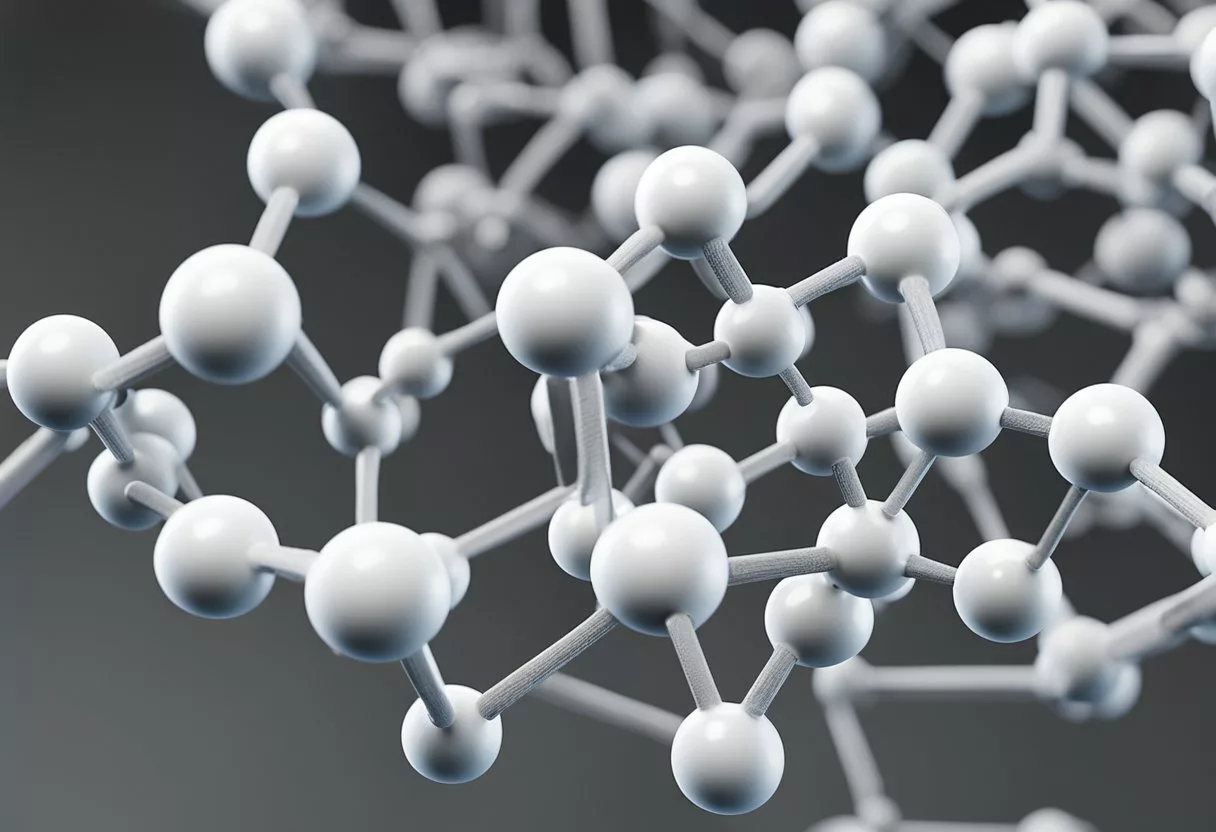
Amino acids are classified into essential and non-essential types based on whether the body can synthesize them. Essential amino acids must be obtained through diet, while non-essential amino acids can be produced by the body.
Essential Amino Acids
Essential amino acids are vital for various body functions and must be ingested through food. They include lysine, tryptophan, isoleucine, leucine, valine, threonine, methionine, phenylalanine, and histidine.
Lysine plays a crucial role in muscle protein synthesis and tissue repair. It also supports immune function and hormone production.
Tryptophan is important for producing serotonin, a neurotransmitter that influences mood. It also helps in the synthesis of niacin, which is essential for energy metabolism.
Isoleucine is an essential amino acid that boosts energy, aids muscle recovery and regulates blood sugar.
Leucine is considered a vital amino acid for the protein synthesis and various metabolic functions.
Valine has a role in muscle metabolism and acts as an energy source during prolonged exercise.
Threonine supports central nervous, cardiovascular, liver, and immune system functioning.
Methionine has a possible role in cancer risk, improve liver metabolism, and participates in protein syntesis and tissue repair.
Phenylalanine is used to make proteins and other important molecules. It has also been studied as a treatment for several medical conditions, including skin disorders and depression.
Histidine plays a vital role in various biochemical processes within the human body. It’s particularly critical for growth and repair of tissues, red and white blood cell production, and maintaining the myelin sheaths that act as protective covers for nerve cells.
These amino acids can be found in foods such as meat, eggs, dairy products, and certain plant-based sources like quinoa and soy.
Non-Essential Amino Acids
Non-essential amino acids can be synthesized by the human body, so they do not need to be obtained through the diet. Examples include glutamate, aspartate, alanine, and glycine.
Glutamate is a key neurotransmitter in the brain and plays a significant role in cognitive functions like learning and memory. It is also involved in metabolism and the synthesis of other amino acids.
Aspartate is involved in the citric acid cycle, which produces cellular energy. It also helps to play a part in synthesizing other amino acids and nucleotides.
These amino acids are found in many protein-rich foods but can also be produced internally from other nutrients. For more details on non-essential amino acids, visit the NCBI Bookshelf.
Amino Acids in Metabolic Pathways
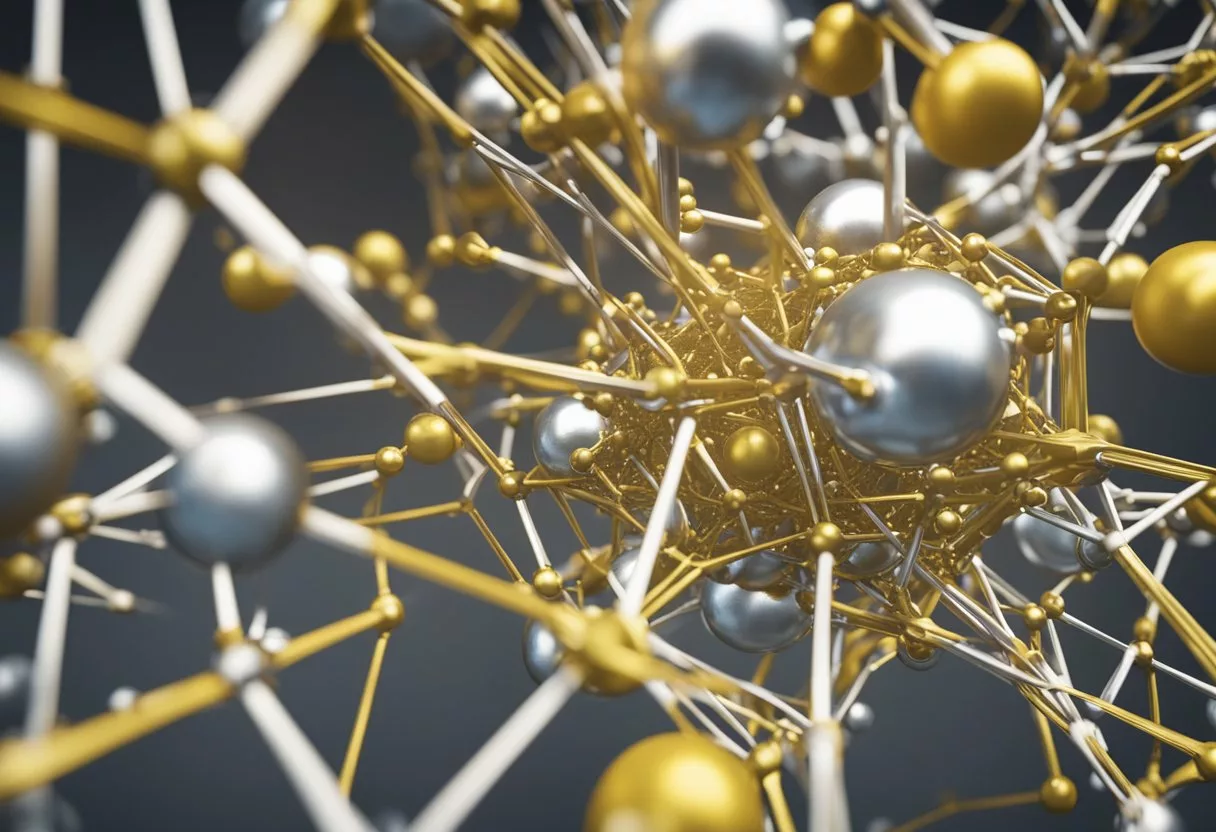
Amino acids play vital roles in various metabolic pathways. Glycine is integral to the citric acid cycle, alanine is crucial for glucose metabolism, and tyrosine is involved in hormone production.
Glycine and the Citric Acid Cycle
Glycine is a simple amino acid but has significant metabolic functions. It is involved in the citric acid cycle, a key energy-producing process in cells.
Glycine participates in the synthesis of porphyrins, which are essential for the formation of heme, an important component of hemoglobin. This process occurs in the mitochondria, where glycine combines with succinyl-CoA to form delta-aminolevulinic acid, a precursor to heme.
Additionally, glycine is a precursor for several important biomolecules. It contributes to the synthesis of purines, which are necessary for DNA and RNA production. Glycine’s role helps maintain cellular energy levels and supports vital biosynthetic pathways.
Alanine in Glucose Metabolism
Alanine is crucial in glucose metabolism. It plays a central role in the glucose-alanine cycle, which helps in transferring amino groups from tissues to the liver.
During this process, alanine is formed from pyruvate through transamination. It then travels to the liver, where it is converted back to pyruvate.
In the liver, pyruvate can enter gluconeogenesis, which produces glucose. This glucose is then released into the bloodstream and used by tissues as an energy source. Therefore, alanine is important for maintaining blood glucose levels, especially during exercise or fasting.
Alanine also helps remove excess nitrogen from muscles. This is done by transporting amino groups to the liver, ultimately converted into urea and excreted from the body.
Tyrosine and Hormone Production
Tyrosine is another amino acid with critical functions. It is a precursor for several important hormones.
Tyrosine is converted into L-DOPA, which is further transformed into dopamine, a neurotransmitter involved in mood regulation and motor control.
Tyrosine also leads to the production of norepinephrine and epinephrine (adrenaline), hormones essential for the body’s response to stress. Additionally, tyrosine is used to synthesize thyroid hormones, which regulate metabolism, growth, and development.
This amino acid’s importance in producing these hormones makes it essential for numerous physiological processes. Tyrosine’s roles highlight its significance in both the nervous and endocrine systems.
Amino Acids and Human Health

Amino acids play critical roles in human health, influencing various bodily functions. This section focuses on tryptophan, phenylalanine, and leucine, particularly their contributions to sleep regulation, skin and hair health, and muscle growth and repair, respectively.
Tryptophan and Sleep Regulation
Tryptophan is an essential amino acid crucial for producing serotonin, a neurotransmitter that regulates mood and sleep. Serotonin is converted to melatonin, a hormone that controls sleep-wake cycles.
Foods high in tryptophan, such as turkey, chicken, and dairy products, can help improve sleep quality. Tryptophan supplements are often used to manage sleep disorders like insomnia.
Adequate intake of tryptophan can enhance overall sleep patterns, allowing for better rest and wellbeing.
Phenylalanine in Skin and Hair
Phenylalanine is another essential amino acid, playing a significant role in the production of melanin. Melanin is the pigment responsible for the color of skin and hair.
Phenylalanine is also a precursor for tyrosine, which is needed for the synthesis of neurotransmitters such as dopamine. These neurotransmitters have various functions, including the modulation of mood and cognitive functions.
It is commonly found in foods like meat, fish, eggs, dairy, and soy products, promoting optimal skin and hair health.
Leucine in Muscle Growth and Repair
Leucine is a branched-chain amino acid (BCAA) vital for muscle protein synthesis. It activates pathways that help build and repair muscle tissue.
This amino acid is particularly important for athletes and those engaging in strenuous physical activities. Consuming leucine-rich foods like beef, chicken, fish, and beans can significantly aid in muscle recovery and growth.
Leucine supplementation is popular among bodybuilders and fitness enthusiasts aiming to enhance muscle mass and strength.
Biochemical Properties of Amino Acids
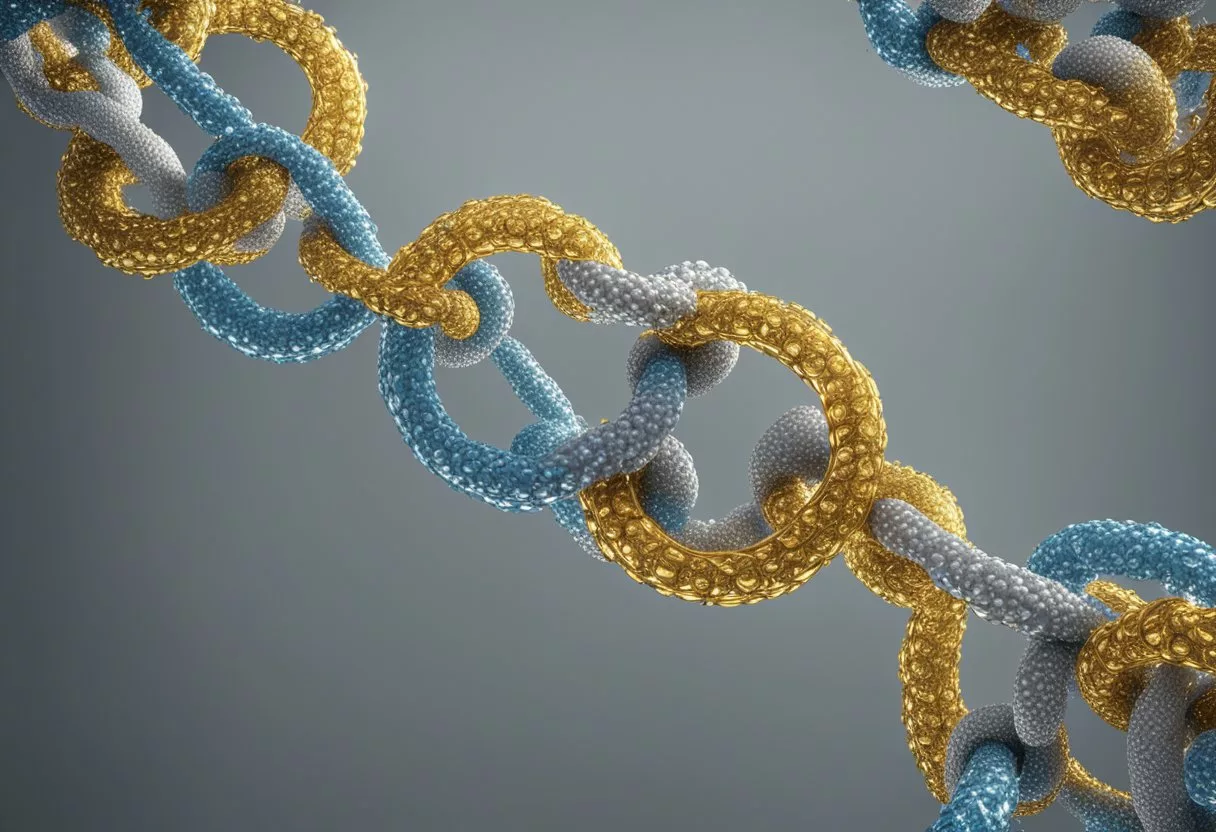
Amino acids exhibit various biochemical properties that affect their behavior and function in biological systems. These properties include how they ionize with pH changes, their affinity for water and solubility, and their ability to absorb light due to aromatic rings.
Ionization and pH Sensitivity
Amino acids can exist in different charged states depending on the pH of their surroundings. At physiological pH, most amino acids are zwitterions, meaning they have both positive and negative charges.
The ionization of amino acids is largely influenced by their side chains (R-groups). For example, acidic amino acids like glutamate have side chains that can lose a proton, generating a negative charge. Meanwhile, basic amino acids like lysine can gain a proton, resulting in a positive charge.
This ionization behavior is crucial for the structure and function of proteins. Changes in pH can affect protein stability and function by altering the charges on amino acids, which can lead to changes in protein folding and interactions.
Hydrophilicity and Solubility
Amino acids vary in their hydrophilicity, which affects their solubility in water.
Hydrophilic amino acids, such as serine and threonine, possess polar side chains that form hydrogen bonds with water, enhancing their solubility.
Meanwhile, hydrophobic amino acids, like valine and leucine, have nonpolar side chains that do not interact favorably with water, making them less soluble. These amino acids tend to be buried within protein structures to avoid contact with water.
The solubility of amino acids is a key factor in protein folding and stability. Proteins are structured so that hydrophilic residues are on the surface while hydrophobic residues are hidden inside, aiding in proper folding and function.
Aromaticity and Light Absorption
Aromatic amino acids, such as tryptophan, phenylalanine, and tyrosine, contain benzene rings that allow them to absorb ultraviolet (UV) light. This property is used to measure protein concentrations and study protein interactions.
Tryptophan, in particular, has a high absorption at 280 nm, making it useful in UV spectroscopy. This feature helps scientists determine the presence and concentration of proteins in a solution.
Aromatic amino acids also play a role in protein structure and stability. Their rings can participate in stacking interactions, contributing to the overall stability and folding of proteins.
Amino Acids in Genetics and Evolution

Amino acids are crucial in the genetic code and play a vital role in evolutionary biology. These building blocks are essential for translating genetic information into functional proteins.
Genetic Code and Codons
The genetic code is the set of rules by which information encoded in genetic material is translated into proteins. It consists of sequences of three nucleotides called codons.
Each codon corresponds to a specific amino acid or a stop signal during protein synthesis. For example, the codons CCU, CCC, CCA, and CCG all code for the amino acid proline, which is known for its rigidity in protein structures.
Codons are universal, meaning the same codon specifies the same amino acid in almost all organisms. This universality suggests a common evolutionary origin. The start codon AUG codes for methionine, which signals the beginning of protein synthesis. Stop codons like UAA, UAG, and UGA indicate the end of protein synthesis.
Francis Crick and the Central Dogma
Francis Crick, a co-discoverer of the structure of DNA, proposed the Central Dogma of Molecular Biology. This framework explains how genetic information flows from DNA to RNA to proteins.
According to the central dogma, DNA is first transcribed into messenger RNA (mRNA). Then, the mRNA is translated into a chain of amino acids, forming a protein.
Crick’s work underscored the importance of amino acids in genetics. Proteins, composed of amino acids, perform essential functions within cells. The sequence of amino acids in a protein determines its structure and function.
Therefore, understanding the role of amino acids is fundamental to understanding both genetics and evolution.
Frequently Asked Questions

Amino acids are crucial components in proteins and play diverse roles in the body. This section addresses common questions about their types, structures, and functions.
What is the total number of amino acids found in proteins?
There are 20 standard amino acids that are commonly found in proteins. These amino acids combine in various sequences to form the proteins essential for life.
What are the essential amino acids required by the human body?
Humans need nine essential amino acids in their diet: histidine, isoleucine, leucine, lysine, methionine, phenylalanine, threonine, tryptophan, and valine. These cannot be synthesized by the body and must be obtained from food.
How are amino acids classified based on their properties?
Amino acids are classified based on the properties of their side chains. The main categories are non-polar, polar, acidic, and basic. This classification affects how they interact within proteins and contribute to protein structure.
What is the significance of non-essential amino acids in metabolism?
Non-essential amino acids, such as alanine and glutamine, can be synthesized by the body. They play significant roles in metabolism, including energy production, immune function, and the synthesis of neurotransmitters.
Can you list the structures and names of the 20 standard amino acids?
The 20 standard amino acids include alanine, arginine, asparagine, aspartic acid, cysteine, glutamine, glutamic acid, glycine, histidine, isoleucine, leucine, lysine, methionine, phenylalanine, proline, serine, threonine, tryptophan, tyrosine, and valine. Each has a unique structure with an amine group, carboxyl group, and specific side chain.
What roles do the different types of amino acids play in physiological processes?
Amino acids play various roles in the body. For example, proline impacts protein structure by disrupting standard secondary structures.
Meanwhile, amino acids like glycine and glutamate are crucial for neurotransmission. Each amino acid type contributes uniquely to biochemical processes and overall health.